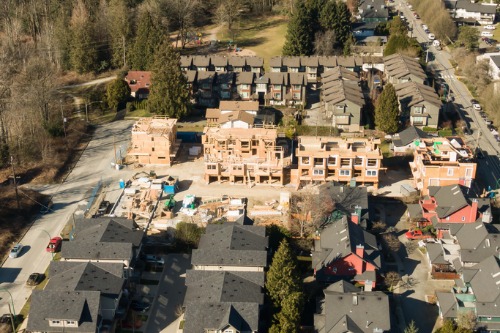This was largely due to a noticeable deceleration in multi-family starts

Canadian housing starts trended lower last month at 218,598 units, down from September’s 223,276 units, according to the latest figures from CMHC.
“Multi-family starts in urban centres trended lower following four months of consecutive gains, offsetting a modest increase in the trend of urban single-detached starts in October,” CMHC chief economist Bob Dugan said.
Toronto was emblematic of this development, with a lower volume of multi-unit starts largely responsible for the slowdown. This was counteracted by robust pre-construction sales of condo apartments over the past two years, which drove more building activity. “Pre-construction sales of single-detached homes trended higher towards the latter half of 2018 and these units have started to break ground over the past several months, thus reflected by their higher trending starts.”
Vancouver suffered a more severe 15% annual decline in multi-unit starts, moderating the overall trend. “However, the year-to-date multi-units starts, mostly concentrated in the City of Vancouver and the City of Surrey, was up 31% compared to the same period last year, contributing to an increase of total starts between 2018 and 2019,” the CMHC report stated.
The situation was more positive in Edmonton, a market characterized by sustained economic recovery for much of this year. “Multi-family unit construction more than doubled compared to the same month last year. This increased occurred across all multi-family housing types, with the largest increase occurring in apartment units. Year-to-date, new housing construction continues to increase, despite elevated inventory levels.”
Accelerated building was also a defining feature of Prince Edward Island last month, with the market enjoying a 146% annual increase in housing starts. New apartment construction intensified due to rental demand and rock-bottom vacancy levels. “So far this year, starts are 68% higher than 2018. This trend reflects primarily increased capital project spending and solid growth in population, income and employment.”



